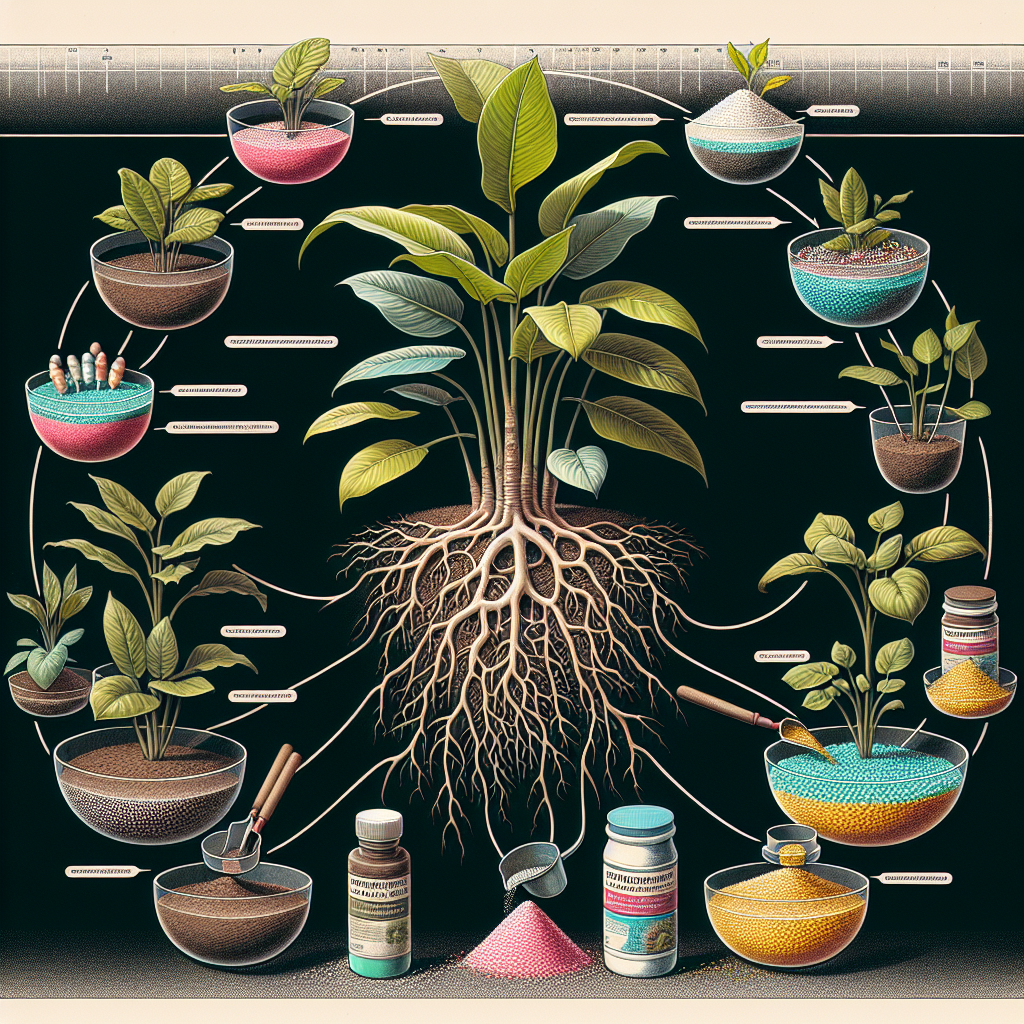Did you know that philodendrons are one of the easiest houseplants to propagate? With a little know-how, you can turn one plant into many!
In fact, a single mature philodendron can provide dozens of cuttings for propagation. Once you have successfully propagated your philodendron, it’s important to give your new baby plants the care they need to thrive. Here’s a simple step-by-step guide on how to nurture your newly propagated philodendrons.
Step 1: Provide the Right Amount of Light
Philodendrons do best in bright, indirect light. This means a spot that gets plenty of light but where the sun doesn’t directly hit the leaves. Some good places for philodendrons are:
-
Near an east- or west-facing window
-
A few feet back from a south-facing window
-
Under a skylight or in a bright room
Avoid placing your newly propagated philodendrons in direct sunlight, as this can scorch their tender leaves. If your home doesn’t get much natural light, you can also use grow lights. Just be sure to position the lights about 12–18 inches above the plants.
Step 2: Water When the Soil is Dry
Newly rooted philodendron cuttings are very sensitive to overwatering. Their small root systems can easily become waterlogged, leading to root rot. To avoid this, only water your new philodendrons when the top inch of soil feels dry to the touch.
Stick your finger into the soil to check moisture levels before watering. When you do water, make sure to thoroughly soak the soil until water runs out of the drainage holes. Then, allow all the excess water to drain away. Never let your philodendrons sit in a saucer of water.
Step 3: Provide Humidity
Philodendrons are tropical plants that love humidity. In their native habitats, they’re used to moisture levels of 60% or higher. The average home is much drier, usually around 30–40% humidity. To give your newly propagated philodendrons the humid environment they crave, you have a few options:
-
Mist the leaves with water a few times a week
-
Set the plants on a pebble tray filled with water (make sure the pots aren’t sitting directly in the water)
-
Run a humidifier near your plants
-
Group your plants together to create a mini-humid microclimate
<div class="container">
<div class="product-image">
<img src="https://m.media-amazon.com/images/I/819HVhU1XiL._AC_SX679_.jpg" alt="Beautiful Pots for Your Plants">
</div>
<div class="product-details">
<div class="product-title">Beautiful Pots for Your Plants</div>
<div class="product-description">
Enhance the beauty of your plants with these stylish and colorful pots. Perfect for both indoor and outdoor use, these pots are made from high-quality materials ensuring durability and longevity. Choose from a variety of colors to match your home décor.
</div>
</div>
<div class="buy-button">
<a href="https://amzn.to/4frVyFf" target="_blank">Buy Now on Amazon</a>
</div>
</div>
<style>
.container {
font-family: Arial, sans-serif;
max-width: 800px;
margin: 20px auto;
padding: 20px;
background-color: #fff;
box-shadow: 0 0 10px rgba(0, 0, 0, 0.1);
border-radius: 10px;
}
.product-image {
text-align: center;
}
.product-image img {
max-width: 100%;
height: auto;
border-radius: 10px;
}
.product-details {
margin-top: 20px;
}
.product-title {
font-size: 24px;
color: #333;
}
.product-description {
font-size: 16px;
color: #555;
line-height: 1.6;
}
.buy-button {
display: block;
width: 100%;
text-align: center;
margin-top: 20px;
}
.buy-button a {
display: inline-block;
padding: 15px 20px;
background-color: #ff9900;
color: #fff;
text-decoration: none;
font-size: 18px;
border-radius: 5px;
transition: background-color 0.3s ease-in-out;
}
.buy-button a:hover {
background-color: #e68a00;
}
</style>
Beautiful Pots for Your Plants
Enhance the beauty of your plants with these stylish and colorful pots. Perfect for both indoor and outdoor use, these pots are made from high-quality materials ensuring durability and longevity. Choose from a variety of colors to match your home décor.
Step 4: Use Well-Draining Soil
When it’s time to replant your rooted philodendron cuttings, be sure to use a potting mix that drains well. Philodendrons will quickly succumb to root rot in heavy, soggy soils. A good philodendron potting mix contains:
|
Ingredient
|
Amount
|
|
Peat moss or coco coir
|
40-50%
|
|
Perlite or pumice
|
20-30%
|
|
Pine bark or orchid bark
|
20-30%
|
|
Worm castings or compost (optional)
|
10-20%
|
You can make your own mix using these ratios or look for a commercial potting soil labeled for use with aroids or tropical plants. Avoid using garden soil, as it doesn’t drain well and may harbor pests and diseases.
Step 5: Fertilize Sparingly
Newly propagated philodendrons are focused on growing roots, not leaves. Because of this, they don’t need much fertilizer in their first few months of life. Once your baby philodendrons are established in their pots and putting out new growth, you can start fertilizing them.
Use a balanced, water-soluble fertilizer diluted to 1/4 or 1/2 strength. Only fertilize every 2–4 weeks during the spring and summer growing season. Skip fertilizing in fall and winter when growth naturally slows down. Overfertilizing can damage the roots and leaves.
Step 6: Watch for Signs of Trouble
Even with the best care, your newly propagated philodendrons may sometimes develop issues. Here are some common problems to watch out for:
|
Problem
|
Cause
|
Solution
|
|
Yellow leaves
|
Overwatering
|
Let soil dry out more between waterings
|
|
Brown, crispy leaf edges
|
Underwatering or low humidity
|
Water more often and increase humidity
|
|
Leggy growth
|
Not enough light
|
Move to a brighter spot or add grow lights
|
|
Wilting
|
Overwatering, underwatering, or cold temps
|
Check soil moisture and move away from drafts
|
|
Pests
|
Bringing plants in from outside
|
Isolate new plants and treat with insecticidal soap
|
By catching problems early, you’ll have a better chance of getting your philodendrons back to full health. Regular inspections can help you spot trouble before it gets out of hand.
Enjoy Your New Philodendron Babies!
With a little patience and TLC, your newly propagated philodendrons will soon grow into beautiful, thriving plants. Once they’re mature, you can even take cuttings from them to start the propagation process all over again! By following this guide, you’ll be able to confidently care for your new philodendrons and watch them flourish. Before you know it, you’ll have a lush indoor jungle to enjoy. Happy growing!
<div class="quiz-container">
<h1> How to Care for Your Newly Propagated Philodendron Plants </h1>
<form id="philodendron-quiz">
<div class="question">
<h2>1. When is the best time to propagate philodendrons?</h2>
<label>
<input type="radio" name="q1" value="a"> Winter ❄️
</label>
<label>
<input type="radio" name="q1" value="b"> Spring
</label>
<label>
<input type="radio" name="q1" value="c"> Fall
</label>
<label>
<input type="radio" name="q1" value="d"> Summer ☀️
</label>
</div>
<div class="question">
<h2>2. How long should the roots be before potting a cutting?</h2>
<label>
<input type="radio" name="q2" value="a"> 1 inch
</label>
<label>
<input type="radio" name="q2" value="b"> 2 inches
</label>
<label>
<input type="radio" name="q2" value="c"> 3 inches
</label>
<label>
<input type="radio" name="q2" value="d"> 4 inches
</label>
</div>
<div class="question">
<h2>3. What should you do if your philodendron's leaves start drooping?</h2>
<label>
<input type="radio" name="q3" value="a"> Increase watering
</label>
<label>
<input type="radio" name="q3" value="b"> Check for root rot
</label>
<label>
<input type="radio" name="q3" value="c"> Move to a sunnier spot ☀️
</label>
<label>
<input type="radio" name="q3" value="d"> Fertilize the plant
</label>
</div>
<div class="question">
<h2>4. How often should you replace the water when rooting cuttings in water?</h2>
<label>
<input type="radio" name="q4" value="a"> Daily ️
</label>
<label>
<input type="radio" name="q4" value="b"> Weekly
</label>
<label>
<input type="radio" name="q4" value="c"> Bi-weekly ️ ️
</label>
<label>
<input type="radio" name="q4" value="d"> Monthly
</label>
</div>
<div class="question">
<h2>5. What type of soil is best for philodendrons?</h2>
<label>
<input type="radio" name="q5" value="a"> Sandy soil ️
</label>
<label>
<input type="radio" name="q5" value="b"> Clay soil
</label>
<label>
<input type="radio" name="q5" value="c"> Loamy, well-drained soil
</label>
<label>
<input type="radio" name="q5" value="d"> Rocky soil
</label>
</div>
<button type="button" onclick="checkAnswers()">Submit</button>
</form>
<div id="results"></div>
</div>
<style>
.quiz-container {
font-family: Arial, sans-serif;
max-width: 600px;
margin: auto;
padding: 20px;
border: 2px solid #4CAF50;
border-radius: 10px;
background-color: #f9f9f9;
}
h1 {
text-align: center;
color: #4CAF50;
}
.question {
margin-bottom: 20px;
}
label {
display: block;
margin: 5px 0;
}
button {
display: block;
width: 100%;
padding: 10px;
background-color: #4CAF50;
color: white;
border: none;
border-radius: 5px;
cursor: pointer;
}
button:hover {
background-color: #45a049;
}
#results {
margin-top: 20px;
text-align: center;
}
</style>
<script>
function checkAnswers() {
const answers = {
q1: 'b',
q2: 'a',
q3: 'b',
q4: 'b',
q5: 'c'
};
let score = 0;
const form = document.getElementById('philodendron-quiz');
const results = document.getElementById('results');
const formData = new FormData(form);
formData.forEach((value, key) => {
if (value === answers[key]) {
score++;
}
});
results.innerHTML = `<h2>Your Score: ${score}/5</h2>`;
if (score === 5) {
results.innerHTML += `<p> Excellent! You're a Philodendron Pro! </p>`;
} else if (score >= 3) {
results.innerHTML += `<p> Good job! Keep learning and growing! </p>`;
} else {
results.innerHTML += `<p> Keep practicing! Your plants will thank you! </p>`;
}
}
</script>
How to Care for Your Newly Propagated Philodendron Plants
care-for-your-newly-propagated-philodendron-plants



